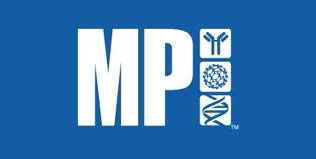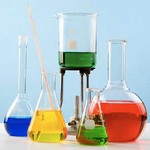Protocol: PBS Recipe


PBS Recipe/phosphate buffered solution
Phosphate buffered saline (abbreviated as PBS) is a buffer solution commonly used in biological research. It is a salty solution containing sodium chloride, sodium phosphate, and (in some formulations) potassium chloride and potassium phosphate. The buffer helps to maintain a constant pH. The osmolarity and ion concentrations of the solution usually match those of the human body (isotonic).
Phosphate buffered saline Applications:
PBS has many uses because it is isotonic and non-toxic to cells. It can be used to dilute substances. It is used to rinse containers containing cells. PBS can be used as a diluent in methods to dry biomolecules, as water molecules within it will be structured around the substance (protein, for example) to be ‘dried’ and immobilized to a solid surface. The thin film of water that binds to the substance prevents denaturation or other conformational changes. Carbonate buffers may be used for the same purpose but with less effectiveness. PBS can be used to take a reference spectrum when measuring the protein adsorption in ellipsometry.
Additives can be used to add function. For example, PBS with EDTA is also used to disengage attached and clumped cells. Divalent metals such as zinc, however, cannot be added as this will result in precipitation. For these types of applications, Good’s buffers are recommended.
10X PBS Recipe
There are many different ways to prepare PBS. Some formulations do not contain potassium, while others contain calcium or magnesium. One of the most common preparations is described below.
A 10 liter stock of 10x PBS can be prepared by dissolving
After complete mixing, top up final solution to 10 L. The pH of the 10X stock is will be approximately 6.8, but when diluted to 1x PBS it should change to 7.4.When making buffer solutions, it is good practice to always measure the pH directly using a pH meter. If necessary, pH can be adjusted using hydrochloric acid or sodium hydroxide.
On dilution, the resultant 1x PBS should have a final concentration of 137 mM NaCl, 10 mM Phosphate, 2.7 mM KCl, and a pH of 7.4.
Another preparation is described in Molecular Cloning by Sambrook, Fritsch and Maniatis, Apendix B.12 as follows:
Another preparation is described in Molecular Cloning by Sambrook, Fritsch and Maniatis, Apendix B.12 as follows:
1 liter of 1X PBS:
-
Start with 800 ml of distilled water:
-
Add 8 g of NaCl.
-
Add 0.2 g of KCl.
-
Add 1.44 g of Na2HPO4.
-
Add 0.24 g of KH2PO4.
-
Adjust the pH to 7.4 with HCl.
-
Add distilled water to a total volume of 1 liter.
Dispense the solution into aliquots and sterilize by autoclaving (20 min, 121°C, liquid cycle). Store at room temperature.
